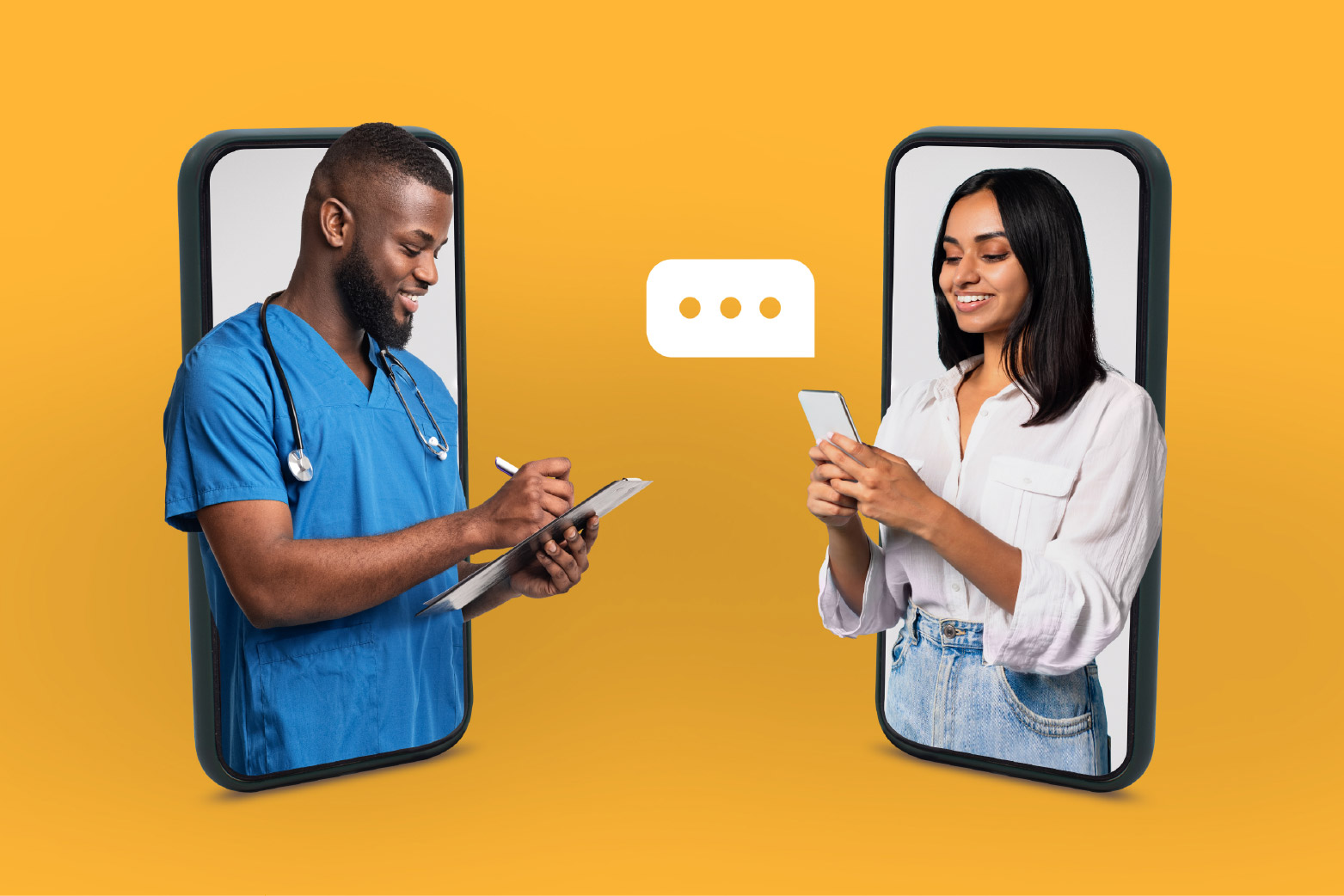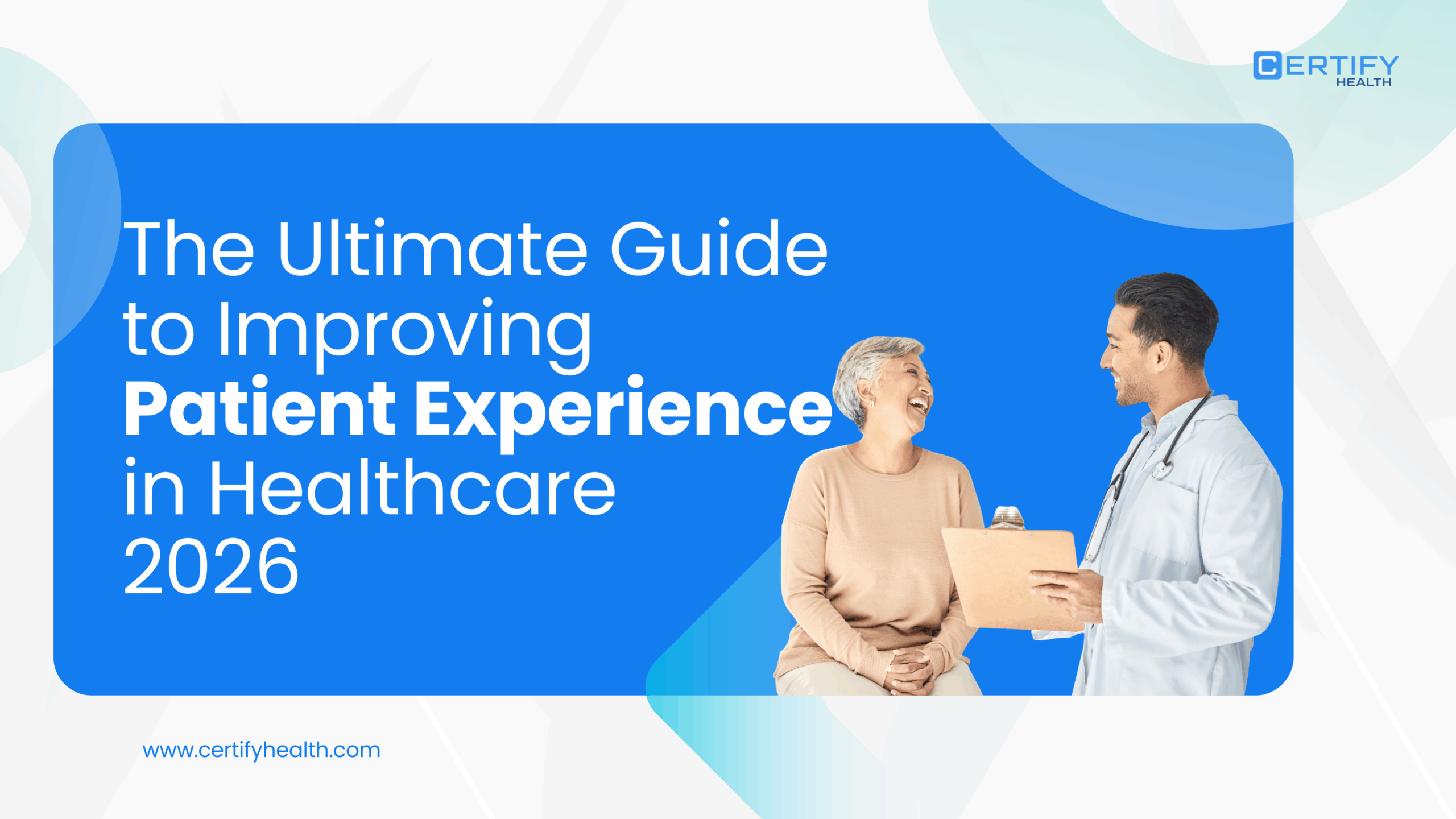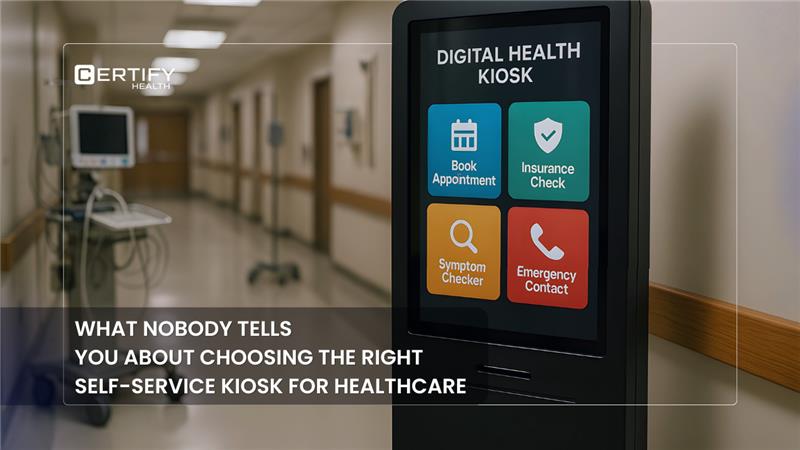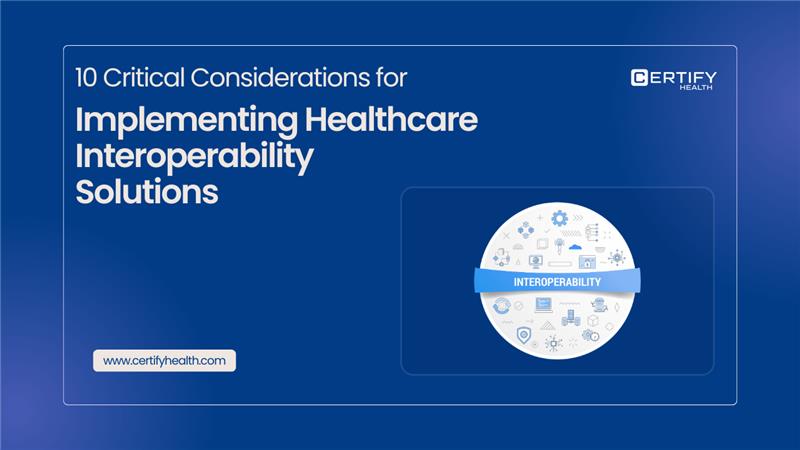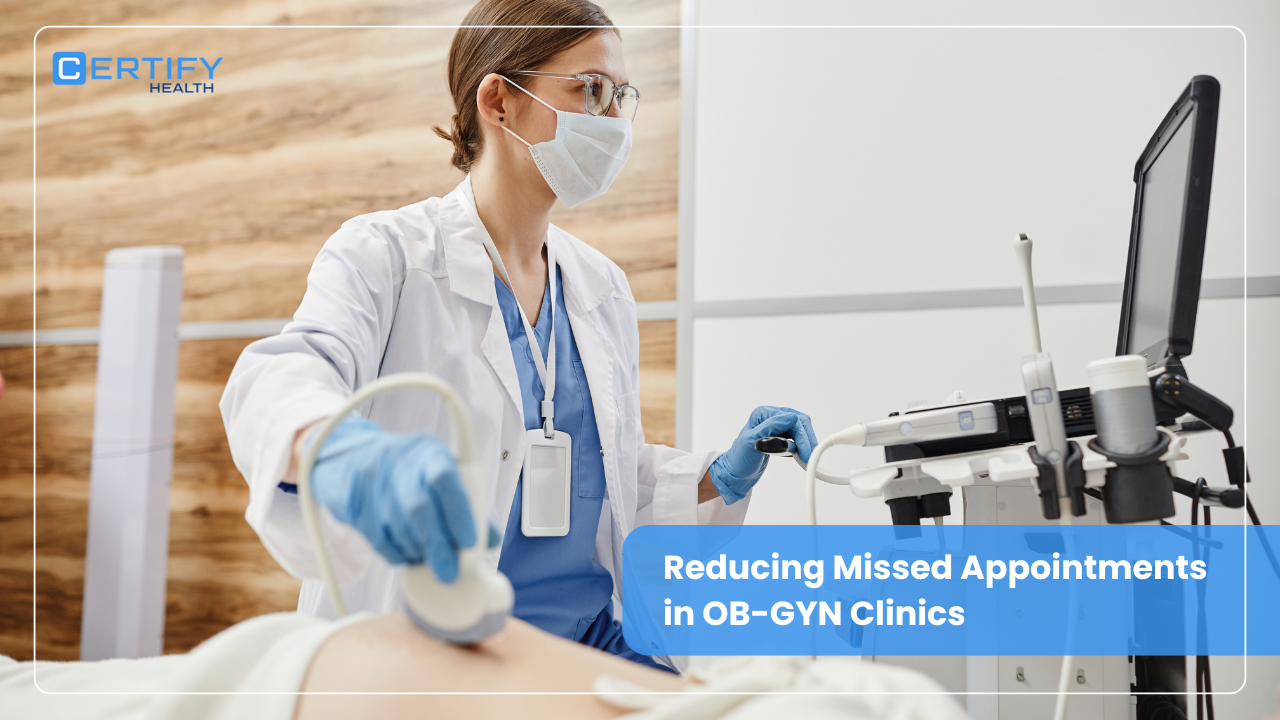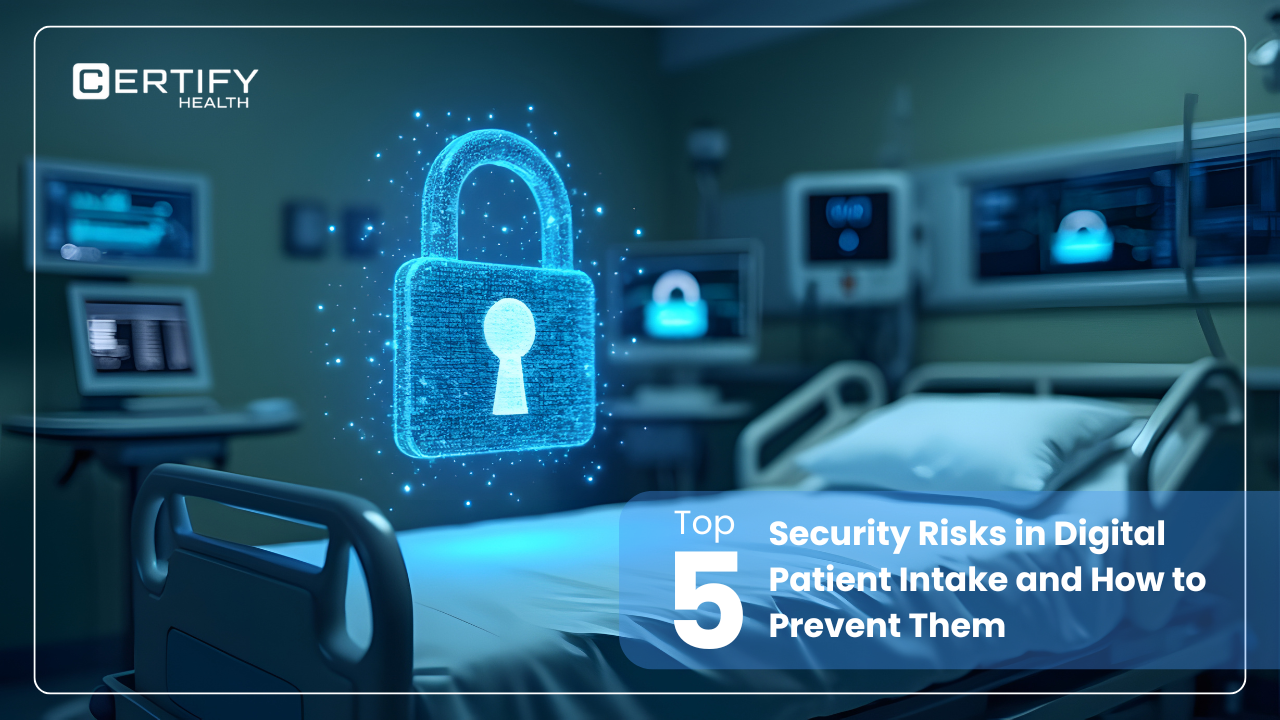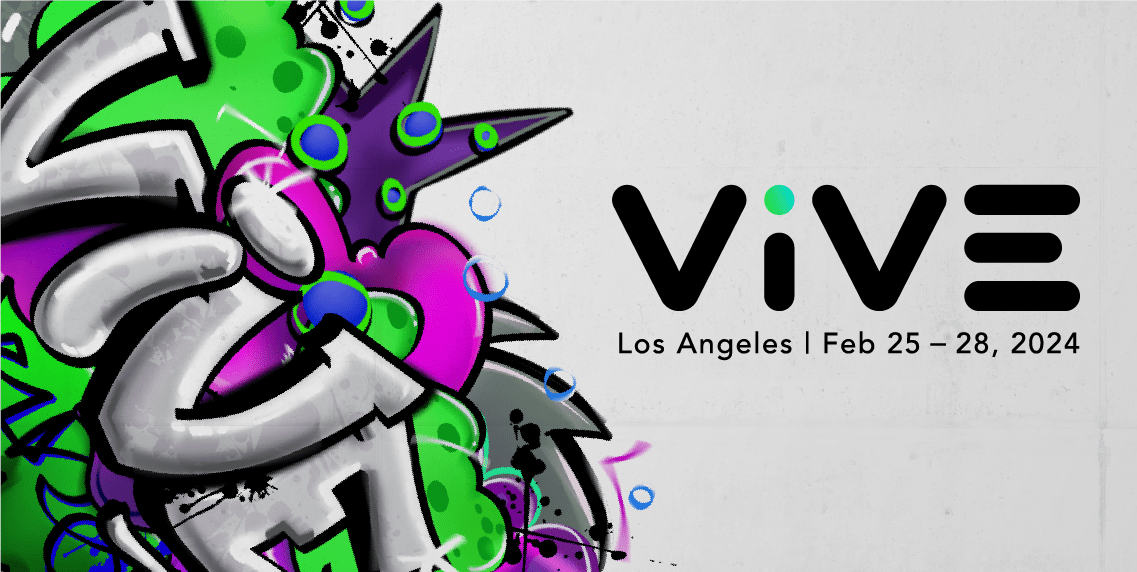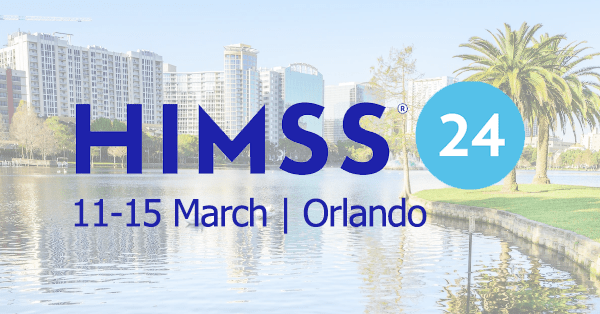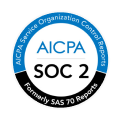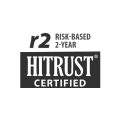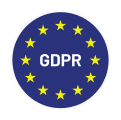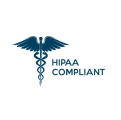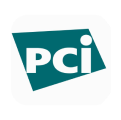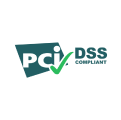Table of Contents
Introduction
Still sending appointment reminders like it’s 2012? Yeah… patients notice. And they are not impressed.
In the healthcare world, patient communication software isn’t just a need—it’s non-negotiable. It’s what separates practices that thrive from those drowning in no-shows, phone tag, and overwhelmed staff.
And here’s the kicker: The market for patient communication software is at the faster rate; by 2030, it is predicted to reach $7.66 billion. That’s the industry waking up to how critical smart communication tools are in modern care delivery.
Practices using this software are claiming that they have seen:
- Fewer no-shows
- Improved staff efficiency
- Increase in patient satisfaction
That said, in this blog, we are going to explore: Why the smartest providers are going all in on communication tech, the must-have features your practice (Why it matters), and the top 10 patient communication software solutions making waves in 2025.
So, if you are tired of juggling missed calls, scattered follow-ups, and clunky workflows—this guide is for you.
P.S. Want a deeper dive into the “Role of Communication in Healthcare?” Check out our blog on effective communication in healthcare.
Why Choose Patient Communication Software?
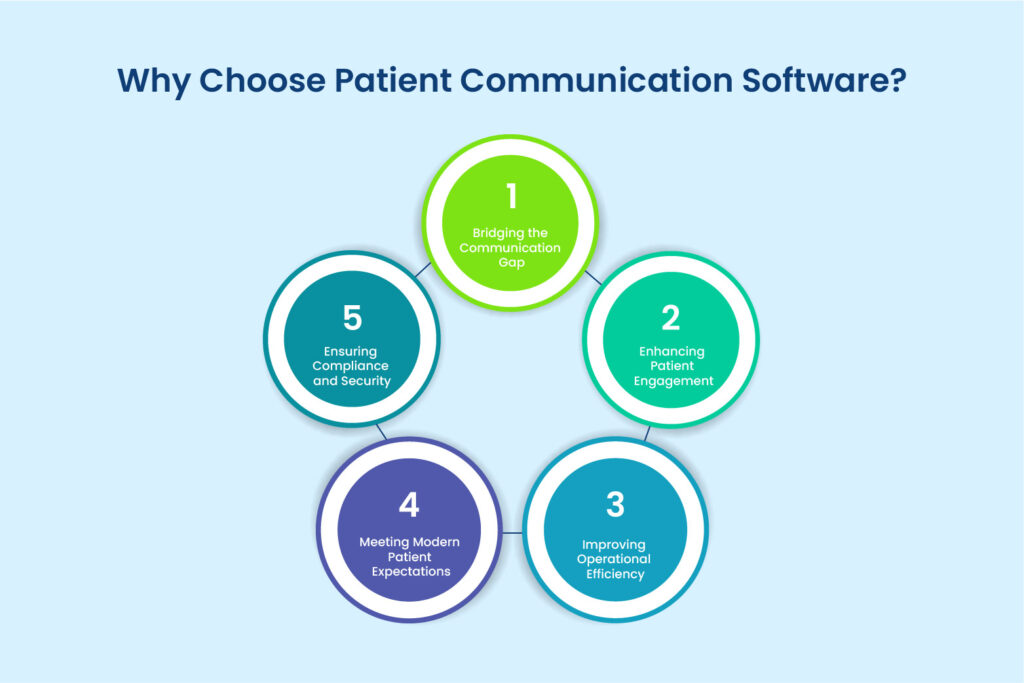
1. Bridging the Communication Gap
Let’s call it out—healthcare communication? It’s a hot mess. Patients get stuck listening to hold music that could qualify as medieval torture, voicemails mysteriously disappear, and somehow, the “we will call you back shortly” promise turns into a full-blown ghosting session. And while these moments might seem small, they chip away at something big: patient trust.
Now here’s where things flip. Instead of missed calls and mounting frustration, you get a system that connects you to patients in real time, across channels they actually use. Automated reminders mean fewer no-shows. Secure messaging means questions don’t hang in limbo. And the best part? Patients finally feel heard. Understood. Cared for.
In a world where attention spans are short and expectations are high, that kind of seamless communication isn’t just helpful—it’s non-negotiable.
2. Enhancing Patient Engagement
Patient loyalty today is hanging by a thread. One bad experience, one forgotten follow-up, and poof—they’re gone, possibly leaving a scathing review in their wake. Disengaged patients aren’t just a missed opportunity—they’re a direct hit to your bottom line. Missed appointments pile up, treatment plans fall apart, and eventually, your practice feels the churn.
Here’s the turnaround: modern patient communication software doesn’t just nudge—it engages. With timely reminders, personalized check-ins, and proactive care alerts, patients stay plugged into their health between visits.
3. Improve Operational Efficiency
Manual communication consumes your staff’s time and energy. Your front desk is stuck in an endless loop—dial, wait, voicemail, repeat. It’s not just inefficient, it’s exhausting. And guess what? While your team plays phone tag, your patients wait… or worse, disappear.
Here’s the fix: automation. With smart patient communication software, your repetitive tasks run on autopilot. Appointment reminders? Sent. Follow-ups? Handled. Practices are reclaiming 15–20 staff hours a week. That’s time you can reinvest into real, revenue-generating patient care.
4. Meeting Modern Patient Expectations
Let’s be real—your patients aren’t just comparing you to other providers. They are comparing you to Amazon, Netflix, and every other app that makes their life easier.
If your practice still relies on voicemail and business-hour scheduling, you are losing patients to competitors who get the modern consumer mindset.
Today’s patient communication software brings your practice into the digital age with online booking, mobile portals, and real-time messaging. And it is a necessity, not just a need. As per one study by Deloitte, 24% of surveyed individuals said they would switch to a healthcare provider if not offered virtual health options.
5. Ensuring Compliance and Security
Healthcare communication isn’t just about sending reminders and checking boxes. It’s about doing it all legally. Every unsecured email or casual text could land your practice in serious regulatory hot water.
That’s where top-tier patient communication software steps in. These platforms are built for HIPAA compliance from the ground up, with encrypted messaging, secure login protocols, and full audit trails. You get the ease patients expect without sacrificing security. In a world where one data breach can ruin reputations, that peace of mind is priceless.
Features You Can’t Miss in Patient Communication Software
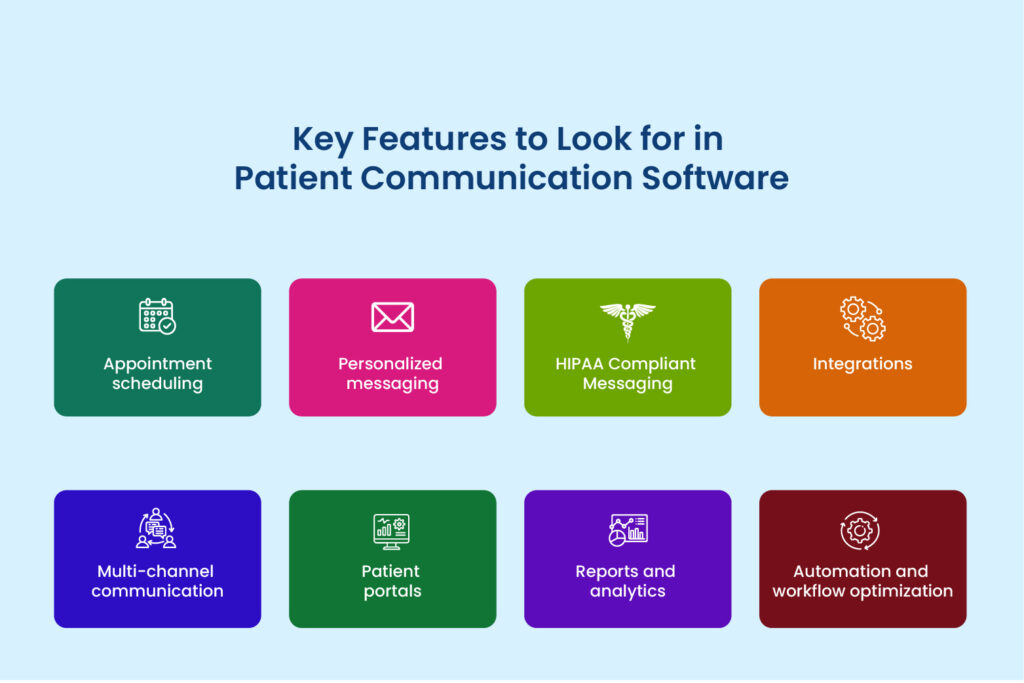
1. Efficient Appointment Scheduling
The days of calling during business hours to book appointments are over. Efficient appointment scheduling tools empower patients to book, reschedule, or cancel appointments anytime, anywhere—reducing no-shows while eliminating hours of staff phone time.
Look for features like:
- Real-time availability displays
- Automated confirmation and reminder sequences
- Self-service rescheduling options
- Waitlist management for filling canceled slots
2. Personalized Messaging
Generic communications feel exactly that—generic. Personalized messaging drives significantly higher engagement rates by delivering the right message to the right patient at the right time.
Essential elements include:
- Customizable templates based on appointment type, patient history, or demographic factors
- Dynamic content insertion pulling from your EHR
- Segmentation capabilities for targeted campaigns
- Multilingual support for diverse patient populations
3. HIPAA Compliant Messaging
Why it matters? Regular texting and email simply don’t cut it for healthcare communications. HIPAA-compliant messaging ensures that every patient interaction is secure and private.
Key security features should include:
- End-to-end encryption for all messages
- Secure access controls and authentication
- Message expiration and remote deletion capabilities
- Comprehensive audit trails of all communications
4. Integration with EHR
Standalone communication tools create more problems than they solve. Seamless integration with EHR systems ensures patient data flows automatically between systems without duplicate entry or information gaps.
Look for:
- Bi-directional synchronization with major EHR platforms
- Automated data flow for appointment scheduling
- Unified patient records across all touchpoints
- Single sign-on capabilities for staff efficiency
5. Multi-Channel Communication
Different patients prefer different communication channels. Effective patient communication software meets patients where they are—whether that’s SMS, email, patient portal messages, or voice calls.
Essential capabilities include:
- Channel preference settings at the patient level
- Automated channel escalation for urgent messages
- Consistent messaging across all platforms
- Performance analytics by channel to optimize strategy
6. Patient Portals
Modern patient portals serve as comprehensive self-service hubs where patients can access records, request refills, view test results, and communicate with providers—all in one secure location.
Look for portal features including:
- Mobile-responsive design
- Intuitive user interface requiring minimal training
- Comprehensive functionality beyond basic messaging
- Family access management for caregivers
7. Real-Time Reporting Analytics
You can’t improve what you don’t measure. Advanced real-time reporting analytics provide actionable insights into communication effectiveness, patient engagement levels, and operational efficiency.
Key metrics to track:
- Message open and response rates
- Appointment confirmation and no-show statistics
- Staff response times and workload distribution
- Patient satisfaction with communication channels
8. Workflow Optimization
The best communication tools adapt to your existing processes, not the other way around. Workflow optimization features ensure the software enhances rather than disrupts your practice operations.
Look for:
- Customizable automation rules based on your practice’s needs
- Configurable staff notification workflows
- Escalation pathways for urgent communications
- Task management integration for follow-up items
Top 10 Patient Communication Software That You Should Explore in 2025
1. CERTIFY Health
CERTIFY Health’s patient communication software is designed for practices of all sizes be it an individual practice or multi-specialty practice or integrated delivery systems (IDS). This comprehensive solution streamlines your patient interactions from pre-visit to post-care follow-ups. Practices can create reminders using custom templates and personalize communication based on patient preferences and appointment types.
Key Features
- Use email or SMS to automatically remind patients of their appointments.
- Patient portal and HIPAA-compliant two-way texting for real-time conversation with your patients.
- Digital consent, intake, or insurance forms that can be sent on demand.
- Queue notification and wait time dashboard message.
- The broadcast messaging feature is helpful for sending consistent communication.
- Standard and customizable templates ensure consistent branding and messaging.
- Omnichannel communication enables conversation across different channels.
- Check campaign performance and analyze key metrics.
- Telehealth feature to support remote care.
- Easy integration with EHR and PMS platform for smooth workflow.
- Multilingual support for patients speaking different languages.
2. Carepatron
To enhance the patient’s experience, Carepatron provides patient communication software. This patient communication software enables appointments scheduling, automated reminders, and a patient portal for patients to access and communicate with ease. It supports HIPAA compliant messaging and store data securely.
Key Features
- Online scheduling and automated reminders are sent through SMS and email.
- HIPAA-compliant two-way communication for enhanced communication.
- Easy access to health records and billing info through the patient portal.
- Send and receive patient intake and consent forms online.
- Send reminders for receiving online patients.
- Monitor key patient communication metrics.
3. Artera
Artera’s patient communication platform is designed to meet the requirements of different healthcare organizations from specialty groups to federal agencies. Its AI enabled virtual agent handles front-desk operations while maintaining personalized interaction with patients.
Key Features
- Supports two-way communication for enhanced patient-provider relationships.
- Automated reminders, follow-up messages, and patient education.
- Multilingual support for non-local language speaking patients.
- Customize messages with logos, contact info, and other branding elements.
- Connects to your current systems or EHR systems.
- Develop patient engagement programs that target certain patient populations.
4. Health Catalyst
Health Catalyst helps healthcare organizations enhance patient engagement and optimize operations by fusing robust data analytics with patient communication features. For mid-sized healthcare firms looking for meaningful insights, their product is especially effective.
Key Features
- The multi-channel feature enables you to send messages through email, SMS, patient portals, etc.
- Make use of AI to create messaging content and enhance patient interactions.
- Seamlessly integrate with EHR, CRM, and remote monitoring devices.
- Alerts your staff when patients require help, ensuring a timely response.
5. Klara
The conversational patient engagement platform Klara is designed to facilitate communication between patients and healthcare professionals. Klara increases patient happiness, lessens administrative strains, and boosts overall practice efficiency by combining many communication channels into a single interface.
Key Features
- Patient and provider communications made possible by two-way messaging.
- Multi-channel communication helps interact through text, web, phone, or chat.
- Allows you to send patient intake forms to complete before the appointment.
- Offer telemedicine support for remote consultations.
- Integrate with EHR to ensure patient communication data is synchronized across platforms.
6. OhMD
OhMD is a comprehensive patient communication platform designed to enhance healthcare interactions by streamlining communication between providers and patients. By leveraging familiar channels like SMS, OhMD facilitates efficient, secure, and HIPAA-compliant conversations without requiring patients to download additional apps.
Key Features
- Two-way SMS texting to engage patients & HIPAA compliance for safe messaging.
- Routine communications, such requests for medicine refills and reminders, can be automated.
- Send broadcast messages to patients for announcements, reminders, etc.
- The web chat feature allows conversations with patients in real-time.
- Senf forms, surveys. Or electronic forms through text messages.
- Integrate with various systems seamlessly.
7. Luma Health
Luma Health provides a HIPAA Compliant messaging platform built for end-to-end patient engagement. It automates and optimizes the entire patient journey, from initial outreach to ongoing care management.
Key Features
- Two-way communication with patients via email, SMS, or voice calls.
- A unified communication history will give your staff the full context of the conversation.
- Send broadcast messages for urgent updates, announcements, or reminders.
- Automated reminders, follow-ups, pre-visit, and post-visit instructions.
- Multilingual support enables patients to communicate in their preferred languages.
- Messages synchronization with EHR systems through integrations.
8. Upfront Healthcare
Upfront Healthcare is a patient engagement and communication platform designed to deliver personalized care navigation at scale. It helps healthcare organizations guide patients to the right care through behaviorally intelligent outreach. By leveraging predictive analytics and targeted messaging, it improves appointment attendance, care plan adherence, and improve overall patient experience.
Key Features
- Personalized, omnichannel patient outreach (text, email, voice)
- Data-driven care gap identification
- Predictive analytics for better engagement
- Seamless EHR integration
- Multilingual support
- Real-time patient engagement tracking
9. Solutionreach
Solutionreach offers a patient communication and engagement platform for various healthcare specialties, including dental, medical, and vision practices. It is designed to improve patient engagement and satisfaction and optimize operational efficiency for practices.
Key Features
- Automated appointment reminders via text/email or voice messages.
- Digital intake and consent forms
- Online scheduling and reminder messages
- Two-way messaging with patients
- HIPAA-compliant communication
- Patient feedback and survey collection
10. TigerConnect
TigerConnect is last on our list of top patient communication platforms. It helps healthcare providers by bringing all the data in one place for unified communication. It aims to provide your staff with easy communication features, respond faster to patients, and enhance patient outcomes and experiences.
Key Features
- HIPAA-compliant secure test messaging
- Telehealth and virtual consultations.
- Scheduled messaging allows you to send automated reminders
- Two-way texting with patients
- Multi-language communication
How to Choose the Right Patient Communication Software for Your Practice
Selecting the ideal patient communication software requires careful consideration of your practice’s unique needs:
Assess your specific requirements
Before you even think about choosing a patient communication solution, hit pause and take a hard look at your current system. What’s breaking down?
Are no-shows eating away at your schedule? Are patients complaining about long hold times? Maybe your multilingual community needs more inclusive messaging?
Getting real about these challenges gives you clarity on what features actually matter. Because the best patient communication software for your practice isn’t the one with the most bells and whistles—it’s the one that solves your biggest pain points, fast.
Prioritize integration capabilities
Standalone tools might look helpful at first—but if they don’t play nice with your existing systems, they’ll just add chaos to your workflows.
Here’s the fix: look for a patient communication software that integrates seamlessly with your current EHR and practice management tools. Don’t just take a vendor’s word for it—ask for a live demo showing how the platforms sync in real time. When your systems actually talk to each other, your team spends less time juggling tabs and more time delivering great care. Integration isn’t optional—it’s everything.
Evaluate security and compliance
HIPAA compliance isn’t a checkbox—it’s your shield against data breaches and hefty penalties. So don’t settle for vague claims like “HIPAA compliant messaging platform.” Ask the tough questions:
- What encryption protocols do you use?
- How are user access and permissions managed?
- Can you show us audit logs and security reports?
- Are you independently certified by third-party security assessors?
The right vendor will welcome those questions—and back their answers with proof. Because when it comes to patient data, trust isn’t given. It’s earned.
Consider scalability
Think long-term, not just launch day. Your communication needs today won’t be the same next year—and your software should keep pace. Look for platforms that scale effortlessly: adding new users, accommodating multi-location practices, or supporting new specialties without breaking a sweat.
Bonus points if the software bends to your workflows—not the other way around. Custom templates, adjustable settings, role-based permissions… these aren’t luxuries, they’re must-haves for practices that want to grow smarter, not harder.
Because the best software doesn’t just fit your practice—it grows with it.
Analyze support and training
Even the best software won’t save your practice if no one knows how to use it. Implementation isn’t just a tech install—it’s a people process. Investigate the vendor’s onboarding strategy before signing the contract.
Do they give you a PDF or walk you through the setup process? Is training tailored to your staff’s needs? Will support ghost you after go-live, or be there when chaos hits?
Adoption isn’t automatic. That’s why look for a reliable vendor along with the platform.
Conclusion
The right patient communication software delivers tangible benefits: bridging communication gaps that frustrate both patients and staff, enhance patient engagement through personalized interactions, improve operational efficiency through automation, meeting modern patient expectations for digital convenience, and ensuring compliance with ever-evolving healthcare regulations.
As you have seen, our top 10 patient communication software list. Each solution brings unique strengths while addressing the core challenge of streamlined secure patient communication.
Explore these solutions today and start your journey toward more connected, efficient healthcare delivery. Book a Personalized Demo


